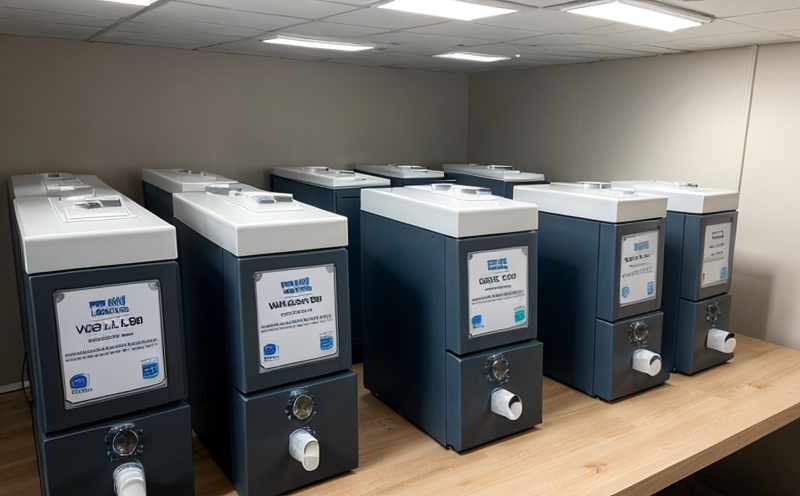ASTM D6007 Determining formaldehyde concentration in air Small chamber
The ASTM D6007 standard is a widely recognized method used to determine the formaldehyde concentration in air, specifically within small chambers. This test method provides a reliable and standardized approach for quantifying formaldehyde levels, which are critical for ensuring indoor air quality (IAQ) compliance with international standards such as ANSI/BIFMA X.5.2-2016.
The ASTM D6007 procedure involves the use of a small chamber designed to simulate real-world conditions encountered in enclosed spaces like offices, schools, and residences. The chamber is sealed and filled with test samples that may include textiles, building materials, or any other potential sources of formaldehyde emissions. Once the chamber is set up and calibrated according to ASTM D6007 specifications, it is allowed to equilibrate for a period specified in the standard.
During this equilibration phase, formaldehyde from the test specimen volatilizes into the air within the chamber. The concentration of formaldehyde in the air is then measured using a gas chromatograph equipped with a flame ionization detector (GC-FID). This method allows for precise quantification of formaldehyde levels down to 0.1 ppb, ensuring accuracy and reliability.
The ASTM D6007 test protocol also includes detailed instructions on sample preparation, chamber setup, calibration procedures, and data interpretation. Compliance with these steps is crucial to ensure accurate results that can be used for regulatory purposes or internal quality control.
Testing according to ASTM D6007 helps manufacturers and designers meet stringent formaldehyde emission limits set by various international standards such as the California Air Resources Board (CARB) and European Union Ecolabel. By ensuring compliance with these regulations, companies can protect consumer health while maintaining a competitive edge in the market.
The ASTM D6007 test is particularly important for industries involved in manufacturing textiles, furniture, carpets, and other products that may release formaldehyde during use. Regular testing helps to identify potential issues early on, allowing for necessary adjustments in production processes or material selection to minimize emissions.
Applied Standards
- ASTM D6007 - Determining formaldehyde concentration in air using small chamber method
- ANSI/BIFMA X.5-2016 - Furniture for the office environment
- CARB Phase II Compliance (California Air Resources Board)
- Ecolabel EU - Environmental labeling and declaration of conformity with EU environmental legislation
Benefits
The ASTM D6007 test method offers numerous benefits, particularly for industries dealing with indoor air quality concerns. By providing accurate measurements of formaldehyde concentrations in small chambers, this standard helps ensure that products meet strict emission limits set by regulatory bodies like CARB and Ecolabel EU.
One significant benefit is the ability to identify potential issues early in the product development cycle. This allows manufacturers to make necessary adjustments before launching a product into market, thereby reducing risks associated with non-compliance or recall costs.
Another key advantage of ASTM D6007 testing lies in its contribution to improved indoor air quality (IAQ). By ensuring that products emit acceptable levels of formaldehyde and other volatile organic compounds (VOCs), the standard helps create healthier environments for consumers. This is especially important given the increasing awareness about the impact of poor IAQ on human health.
For companies operating internationally, compliance with ASTM D6007 can also simplify regulatory processes across different regions. Many countries reference or adopt ASTM standards as part of their own national regulations, making it easier for businesses to navigate diverse compliance requirements globally.
Industry Applications
- Furniture manufacturing
- Textile production
- Carpets and rugs manufacturing
- BUILDING MATERIALS INDUSTRY
- Paper and paper products manufacturing





